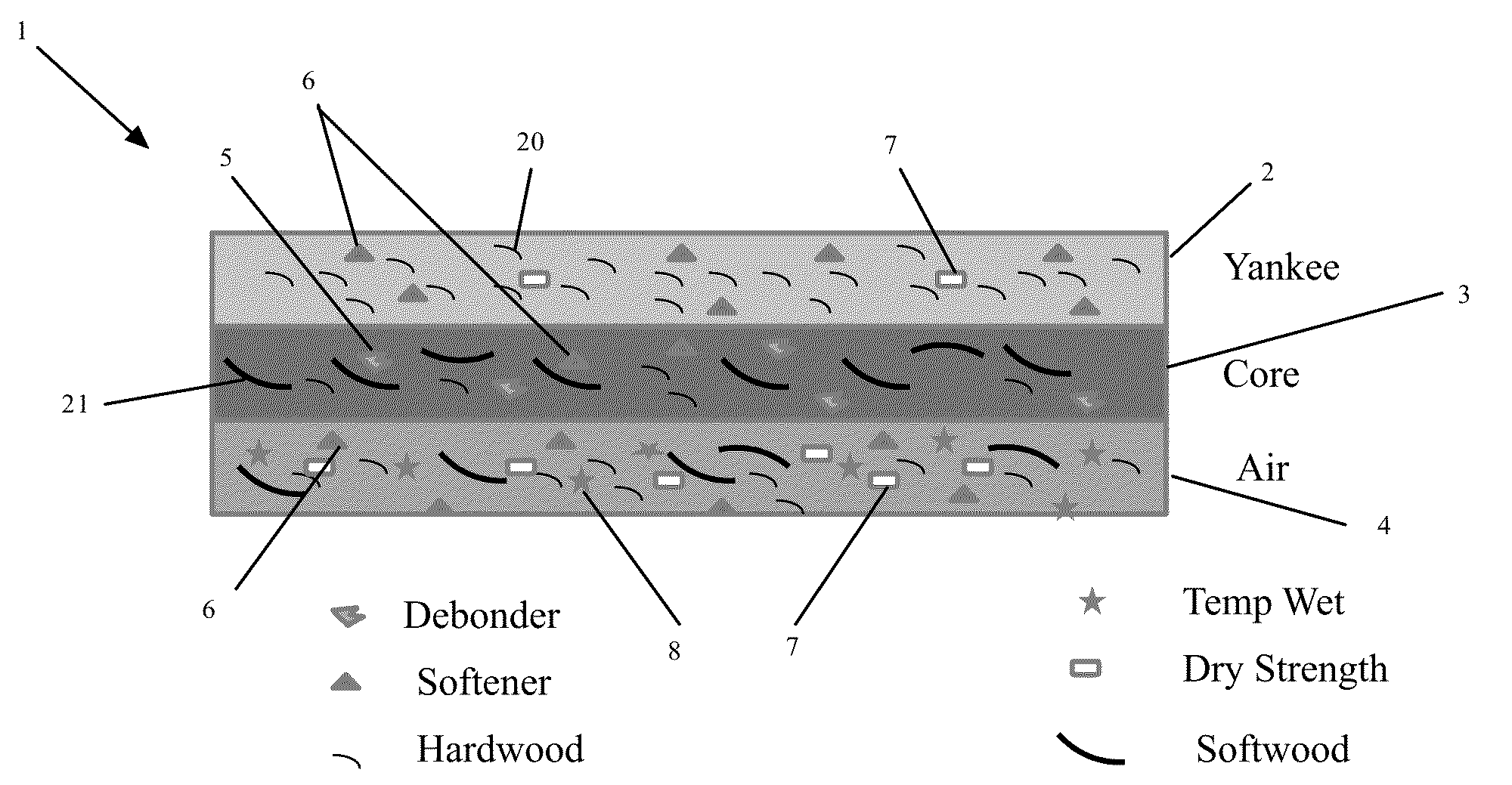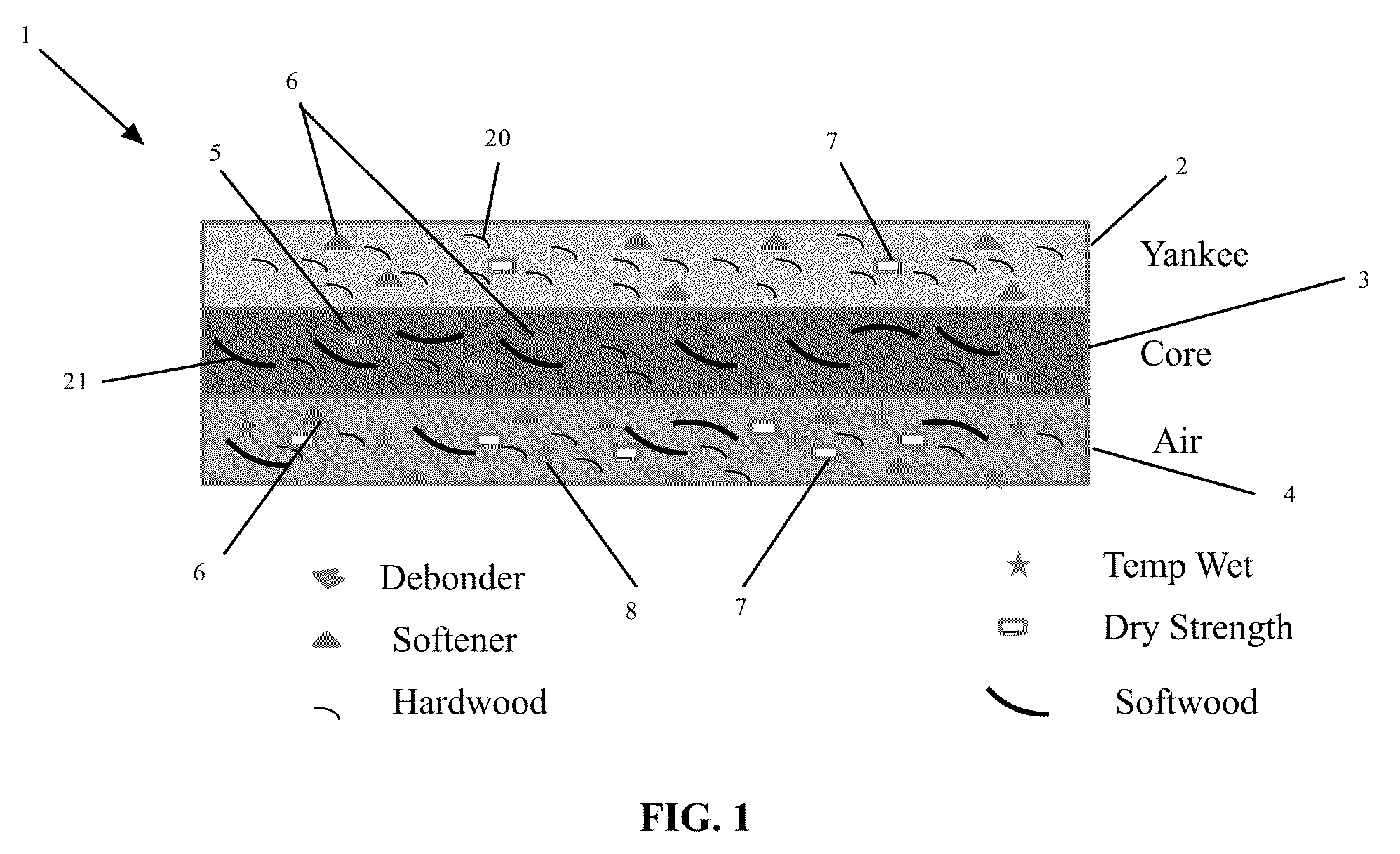Soft through air dried tissue
a tissue and air drying technology, applied in the field of tissue, can solve the problems of reducing tissue strength, increasing cost, and using additives in the wet end, and achieve the effect of reducing the softness and cleaning ability of the resulting tissue, and not compromising the softness and cleaning ability
- Summary
- Abstract
- Description
- Claims
- Application Information
AI Technical Summary
Benefits of technology
Problems solved by technology
Method used
Image
Examples
example 1
[0067]Through air dried tissue was produced with a three layer headbox and a 005 Albany TAD fabric. The flow to each layer of the headbox was about 33% of the total sheet. The three layers of the finished tissue from top to bottom were labeled as air, core and dry. The air layer is the outer layer that is placed on the TAD fabric, the dry layer is the outer layer that is closest to the surface of the Yankee dryer and the core is the center section of the tissue. The tissue was produced with 45% eucalyptus fiber in the air layer, 50% eucalyptus fiber in the core layer and 100% eucalyptus fiber in the dry layer. Headbox pH was controlled to 7.0 by addition of a caustic to the thick stock before the fan pumps for all samples.
[0068]Roll size was about 10,000 meters long. The number of sheet-breaks per roll was determined by detecting the number of breaks in the sheet per every 10,000 meters of linear (MD-machine direction) sheet run.
[0069]The tissue according to Example 1 was produced w...
example 2
[0070]Example 2 was produced with the same conditions as Example 1, but chemical addition rates were changed. Specifically, the amount of dry strength additive (Redibond 2038) was increased from 5.0 kg / ton to 10.0 kg / ton and the amount of softener / debonder (T526) was increased from 2.0 kg / ton to 3.6 kg / ton.
example 3
[0071]Example 3 was produced with the same conditions as Example 1 except with T526 added to the dry layer.
PUM
| Property | Measurement | Unit |
|---|---|---|
| humidity | aaaaa | aaaaa |
| length | aaaaa | aaaaa |
| roughness | aaaaa | aaaaa |
Abstract
Description
Claims
Application Information
 Login to View More
Login to View More - R&D
- Intellectual Property
- Life Sciences
- Materials
- Tech Scout
- Unparalleled Data Quality
- Higher Quality Content
- 60% Fewer Hallucinations
Browse by: Latest US Patents, China's latest patents, Technical Efficacy Thesaurus, Application Domain, Technology Topic, Popular Technical Reports.
© 2025 PatSnap. All rights reserved.Legal|Privacy policy|Modern Slavery Act Transparency Statement|Sitemap|About US| Contact US: help@patsnap.com



